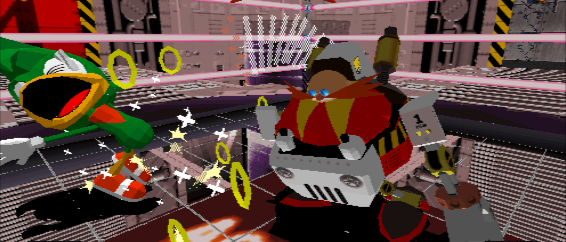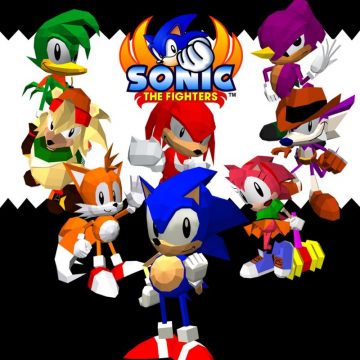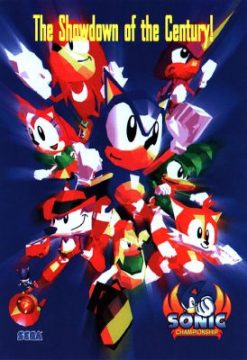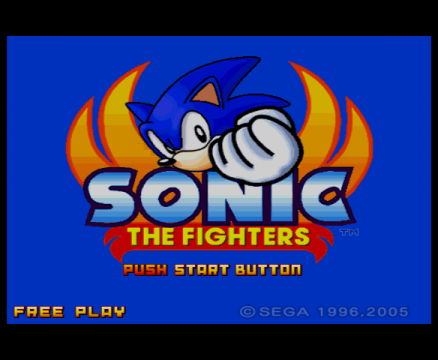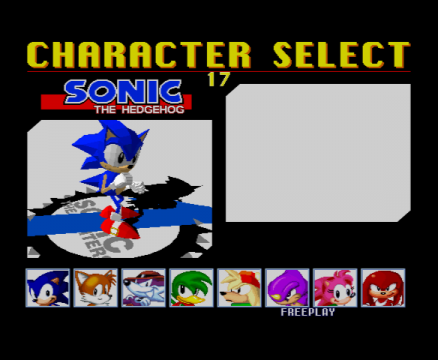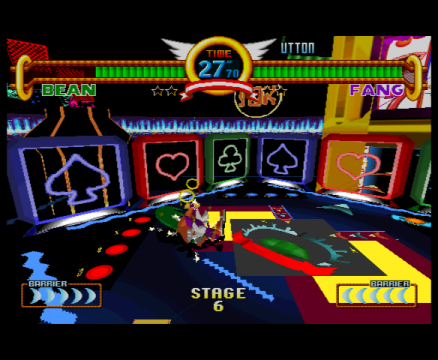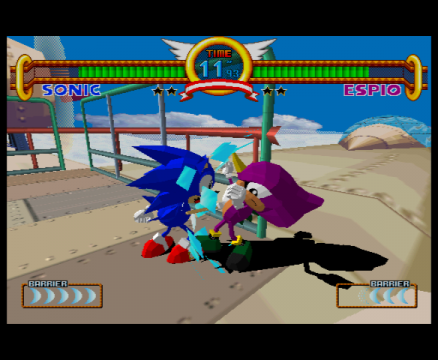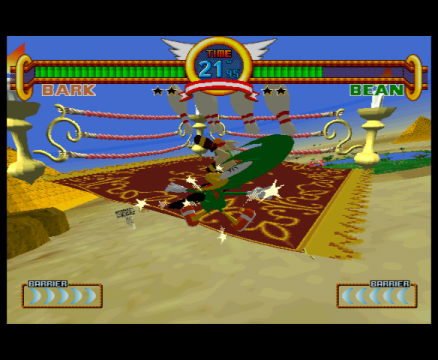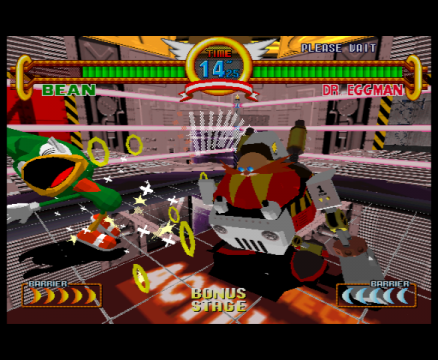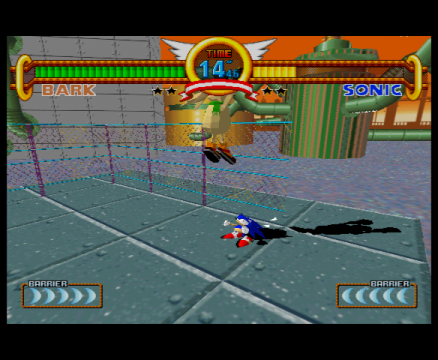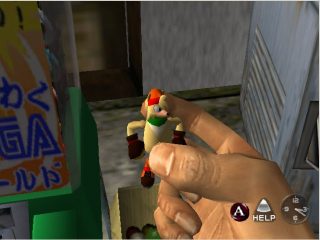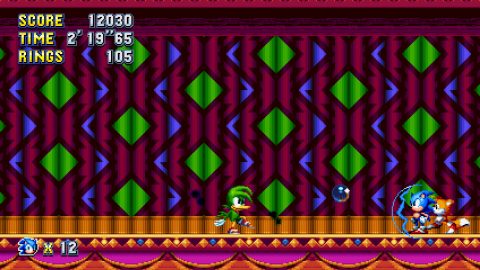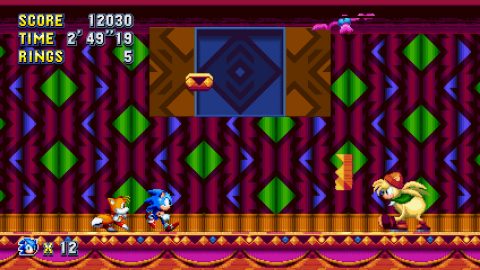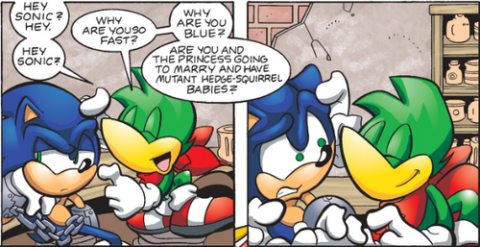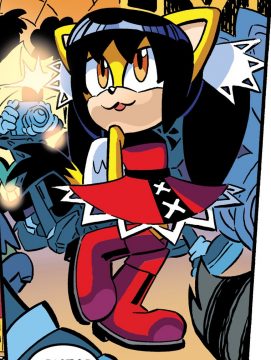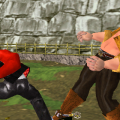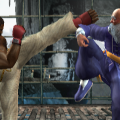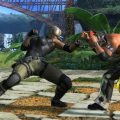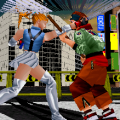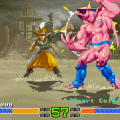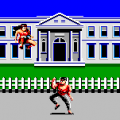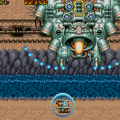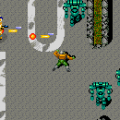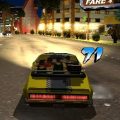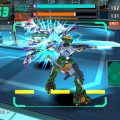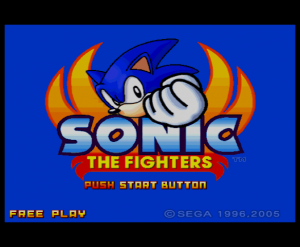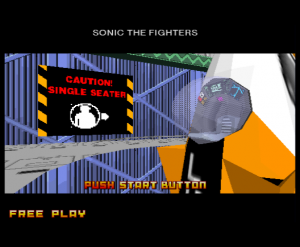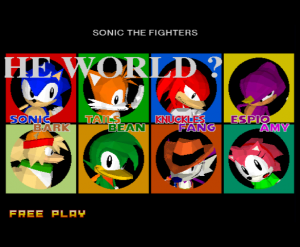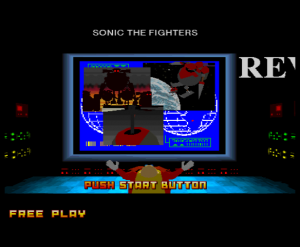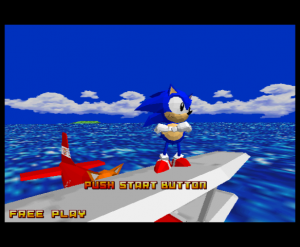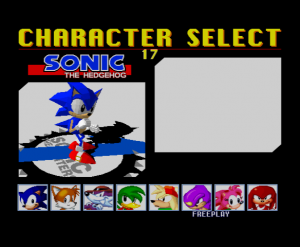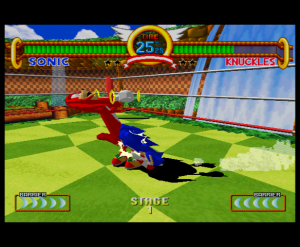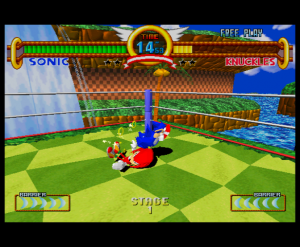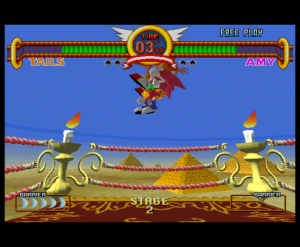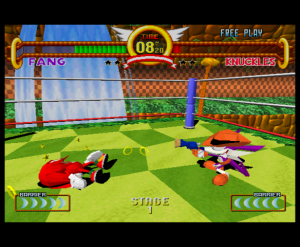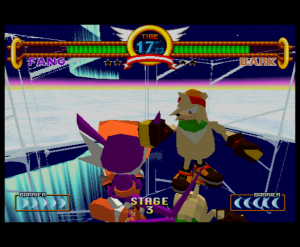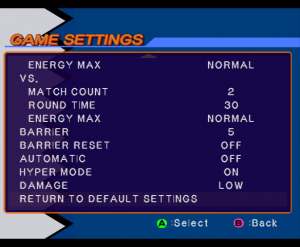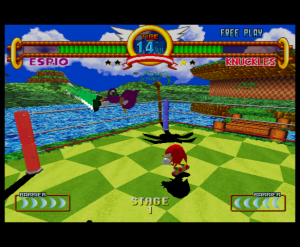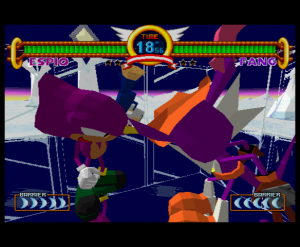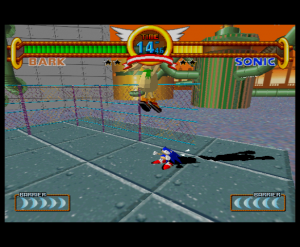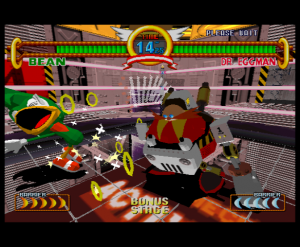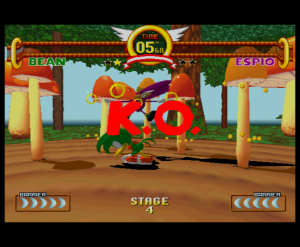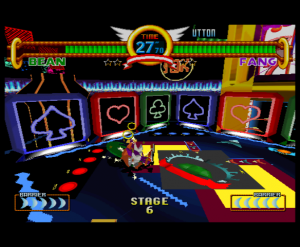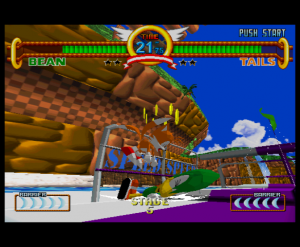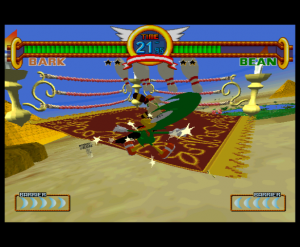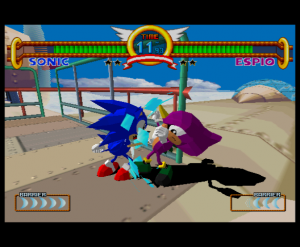- Sonic the Hedgehog
- Sonic the Hedgehog 2
- Sonic CD
- Sonic the Hedgehog 3
- Sonic & Knuckles
- Sonic the Hedgehog 4
- Sonic Mania
- SegaSonic The Hedgehog
- Sonic The Fighters
- Sonic 3D Blast
- Knuckles’ Chaotix
- SegaSonic Bros.
- Sonic the Hedgehog (8-bit)
- Sonic the Hedgehog 2 (8-bit)
- Sonic Chaos
- Sonic the Hedgehog Triple Trouble
- Tails’ Skypatrol
- Tails Adventures
- Sonic Labyrinth
- Sonic Drift
- Sonic Drift 2
- Sonic Blast
- Sonic R
- Murder of Sonic the Hedgehog, The
If you ask any random person the first series that comes to mind when they think “Sega”, the answer is more than likely going to be Sonic. You’d also probably have more than one person bring up one of Sega’s many 3D fighting games throughout the 90s, classics of the genre such as Virtua Fighter and Fighting Vipers. Two things practically synonymous with 90s Sega, and yet so very difficult to imagine coming together. What started off as a bored programmer sneaking Sonic & Tails into Fighting Vipers, however, eventually snowballed into a surprisingly solid fighting game. Sadly, for various reasons, it’s a game that never quite got the attention that it deserved. Recent rereleases, along with improvements in emulation, have managed to help counter that, and it’s a game that any fan of the hedgehog or AM2’s output should look into.
The evil Dr. Eggman is launching some sort of evil scheme from his newly built Death Egg II. This time around, however, Tails has the foresight to build a rocketship to skip the usual platforming action and take the fight straight to the doctor. Unfortunately, the rocket needs eight chaos emeralds, one more than the standard seven, to function. Even more of a problem is that Tails didn’t consider adding more than one seat. In typical fighting game fashion, the only solution is for Sonic, his friends, and his rivals, to beat each other up, gather the emeralds, and finally take down Eggman once more. It’s a little more of a plot than you’d get from most of AM2’s fighters, but in their typical fashion, there’s no unique endings for each character to reward your playthrough.
There’s eight playable characters gathered from across the franchise. Besides the blue hedgehog himself, you have the usual standbys of Tails and Knuckles. Amy, debuting in Sonic CD, makes her first playable appearance outside of a car, wielding her “Piko Piko Hammer” she’d carry with her into future games. Deeper cuts include Fang (“Nack” in Western territories), the popgun-wielding gerboa from Game Gear’s Triple Trouble, as well as the ninja chameleon Espio, from 32X’s Knuckles’ Chaotix. Two brand new characters round out the cast: Bean is a bomb-tossing duck inspired by Bin & Pin, the heroes from past Sega brawler Dynamite Dux. Finally, Bark is a heavyset polar bear who lacks the speed of most of the cast, but excels in dealing big damage.
Those familiar with the mechanics of AM2’s previous works in the genre should be able to get used to Fighters fairly quickly. There’s a button for punches, one for kicks, and another to guard against incoming attacks. Most of the characters share a similar set of moves, often performed through tapping one of the buttons, or by pressing one or more buttons together with a direction. Almost every character shares a common pool of moves that are similar in execution, if not their animation. Among the common moves are things like punch and kick combinations, running attacks, heavy attacks to send opponents flying, and the ability to leap onto prone and standing opponents alike for extra damage.
One new wrinkle is the ability to quickly evade to the side by pressing all three buttons simultaneously — sort of a prototype for a similar move that’d appear in Virtua Fighter’s third installment. Evading is especially important to use alongside guarding for defense, as every character is capable of a couple of quick attacks after an evade that can punish an unsafe move. Characters can also slip around an opponent entirely by evading while standing next to their opponent, letting them quickly get in a few hits on their back, if they’re fast enough. Guarding, on the other hand, has your character bring up an energy barrier around themselves, which can be broken by certain combos and heavy attacks. Grabs will also break through an opponent’s barrier, as will evading while close to them.
What sets this technique apart from other AM2 fighters is that you only get a limited supply of barriers to last you through an entire match. Certain moves, such as the Spin Dash, are capable of taking out multiple barriers at once, which means that if you get sloppy, it’s possible to end up not being able to block at all early in the match. It can be somewhat harsh, but given the game’s fast-paced, offense focused nature, it fits pretty well, and helps bring out the intense speed the series is known for. You can also sacrifice a barrier to enter “Hyper Mode”, which vastly reduces your damage and removes your ability to break an opponent’s guard. The tradeoff is that the recovery times on your attacks are vastly reduced, letting you hammer your opponent with a nonstop barrage of attacks. Every character also has a unique move only accessible in Hyper Mode, such as Bean’s ability to teleport.
The walls around each arena are also important to take note of, as there are no ringouts to worry about in Fighters. The walls can be used to perform certain unique attacks to surprise your opponent, and every character is capable of running up them, allowing them to perform hard to avoid leaping attacks. They can also be hazardous, as heavy attacks will send your character flying through the air, and crashing into a wall is a good way to end up lying prone. Somewhat unusually for a 3D fighter, characters can recover in midair before hitting a wall, keeping them from letting an opponent get an advantage on them.
Aside from the basic set of moves all characters share, every character has a few unique moves that help set them apart. Sonic has the ability to spin dash in circles, where he can either feint out his opponent or launch into an attack. Fang can use his popguns to blast at foes from long distance, as can Bean with his endless supply of bombs. Bark, however, is the most mechanically complex of all the fighters – his bulky frame means he lacks a few of the moves his smaller opponents have access to, but he has the widest variety of throws among the cast. The relative simplicity of the movesets has its pros and cons, as while it means characters are somewhat less unique than your average Virtua Fighter, it also means it’s a lot easier to learn how to properly play a character.
Fighters takes a fair deal of inspiration from the faster-paced Fighting Vipers, giving it an intense, blazing-fast speed matched by few other 3D fighters of the time. Characters move and attack so quickly that you always need to stay alert, and the unique barrier system means that staying offensive is always paramount. The actual fighting is blazing fast, and victory often means knowing exactly which of your options you can use to counter an opponent’s offense and inflict damage of your own. One particular annoyance that can’t be disabled is a where players with less health inflict more damage, so a player with low health that lands a strong attack will devastate their opponent’s lifebar. It’s certainly less deep than certain other fighters of the time, but there’s just enough that matches stay interesting, all while being a far more approachable game.
The single player mode pits you against all eight opponents, including a greyscale copy of your chosen character spawned by Eggman’s UFO. The AI starts off incredibly simple, but ramps up by the halfway point that you’ll often have to spend at least one credit to make any progress. All this comes to a head when you encounter Metal Sonic in the penultimate stage, who’s a massive pain in just about every way. His moves are incredibly fast, easily takes out your barriers, and he often seems to be able to counter just about any move you’re able to do. Beating him will almost guarantee that you’ll have to use a handful of credits, if not more. In a nice touch, however, if you’re able to get Sonic this far on a single credit, you’ll be able to transform into his Super form, which evens the odds considerably.
After defeating Sonic’s loathsome copy, the Death Egg will begin to self destruct, and Eggman himself will engage you in a mech built for hand to hand combat. The challenge here is that you’re only given fifteen seconds and one chance to take Eggman out. While he’s not nearly as difficult as Metal, a run of bad luck leads to an instant game over, meaning all the effort you made in the previous stage was just rendered pointless. Still, given how short the ending is and the fact that it’s identical for each character, it’s generally not all that much of a loss.
As one of pre-Dreamcast Sonic’s first appearances in the third dimension, the game manages to hold up graphically surprisingly well. The Model 2 hardware that powers the game means the models are crisp, and the frame rate holds up well. The stages are all also fairly detailed, with more than a few some impressive polygonal backgrounds. The highlight would have to be Tails’s stage, a speedboat cruising down a canyon river. The boat passes by waterfalls, dips as it flows over drops in the river, and even darkens the lighting as it passes through tunnels. Sadly, the music doesn’t quite reach the high standards the series usually sets, being decent enough, but firmly unmemorable, with none of the many classic tunes from across the series making an appearance.
One might think it’d be difficult to transfer Sonic’s colorful universe to the fighting genre, but there’s been a lot of effort made into making it work. (It’s a missed oppurtunity that the rounds aren’t referred to as “Acts”, however.) While Virtua Fighter prided itself on its realism, and Fighting Vipers featured over the top fighting moves, Fighters is all about the slapstick. Rings pour of of opponents as they take damage, big cartoon stars appear over prone foes, and all the characters all react visibly after losing a match. A lot of the moves take advantage of these cartoon physics as well, which makes them fun to watch. Amy points to her opponents to look at something, distracting them just long enough for her to whack them with her hammer. Bark’s overhead slam hits opponents so hard they shrink, forcing them to fight briefly while squished. All this, combined with the expressive characters and the impressive squash and stretch animation the models employ, makes for probably one of the best looking games AM2 put forth for the hardware.
Unfortunately, despite how surprisingly well the concept turned out, the game never got as much attention as it deserved. A version for the Sega Saturn was reportedly in development, but never came to light. No other home ports would follow during Sega’s time in the console market, and with cabinets being rare on Western shores, the game faded into obscurity.
In 2005, however, the game finally saw rerelease on Sonic Gems Collection, a compilation of more obscure Sonic games that hadn’t previously seen ports. This version is just about arcade perfect, and even comes with some useful extras. There’s a Versus Mode for strictly player versus player fights, as well as a move list that can be accessed during gameplay for each character. There’s also a handful of extra options for versus play, including changing how many barriers each player receives, whether they reset after each round, whether to allow Hyper Mode, and how much damage players inflict, among other options.
Surprisingly, however, Sega wouldn’t stop there. The game was released on PSN and XBLA in 2012, once again being an arcade perfect port. This version also allows you to play as the previously unselectable Metal Sonic and Eggman, along with one entirely new character. The arcade version of the game was planned to feature an anthropomorphic, Sonic-ized version of Fighting Vipers’s Honey as a playable fighter. This version finally makes her into a selectable character, which along with this port’s ability to play online, easily makes this release the definitive version.
The Legacy Of Bean & Bark
The Sonic franchise has had an annoying history of discarding characters when they’re no longer needed, but Bark & Bean have managed to make a few surprise appearances.
Fighters’ Megamix – Sega Saturn (1996)
Among the characters across AM2’s fighter portfolio that made the cut, the bear and bird are the only two who made their way in from Fighters. They feature most of their moves from Fighters, aside from losing their original game’s mechanics such as evading and barrier stocks. Unfortunately, the vast differences in mechanics between the two games mean they’re not particularly effective as fighters.
Shenmue – Dreamcast (1999)
Among the many Sonic toys Ryo can collect on his quest to avenge his father are Bark & Bean. Anachronistic, sure, but appreciated all the same.
Sonic Mania – 2017
As a love letter to classic Sonic fans, it’s not particularly surprising that Bark & Bean made one appearance in the Mirage Saloon Zone. What is surprising, however, is that they made two. During the boss battle with the Heavy Magician, she constantly changes form, switching from Fang/Nack, to Bean, and then to Bark. It’s not quite the same as having the characters themselves make an appearance, but it’s still impressive that somebody managed to include them at all.
Sonic The Hedgehog – Archie Comic
Bark & Bean make several appearances throughout Archie Comic’s run of the series. Bark is portrayed to be strong and silent, while Bean is… not so much.
Fighters also got an arc loosely based around it, near the end of the comic’s lifespan. Honey makes an appearance in her Fighters form, as well as a boar version of Fighting Viper’s Jane, and bizarrely enough, Segata Sanshiro, who’s still a human.
